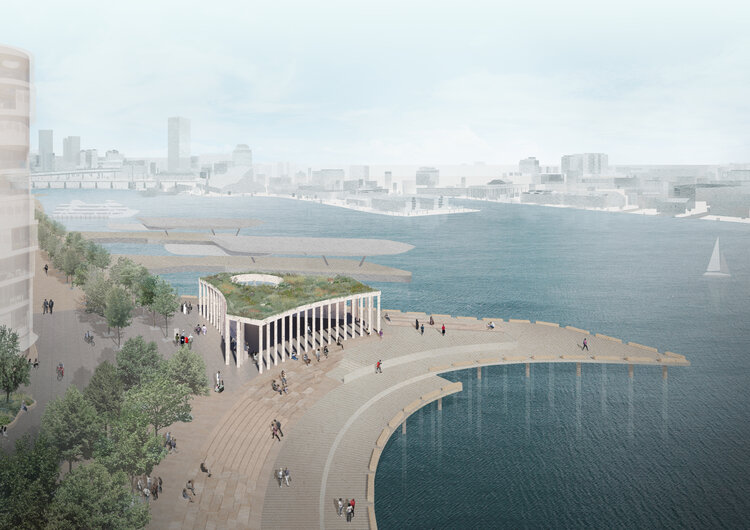New frontiers for circular architecture: in Australia oyster shells become building materials.
The new Sydney Harbor Pavilion, designed by architects Jessica Spresser and Peter Besley, will use recycled local oyster shells mixed with concrete. A circular choice that fits perfectly with the concept of the project: celebrating the bond and the point of union between land and sea.
500 thousand oyster shells for the Barangaroo Pier Pavilion
The Spresser and Besley project is the winner of a competition launched by the state of New South Wales to build the new pavilion at the Sydney Harbor. The Barangaroo Pier Pavilion will serve as a meeting place and site to host events and shows, but it will also have a scenic and symbolic function, as a monument.
The jury was particularly impressed by how the project by Spresser and Besley "celebrates elements that compose the site: land, sea and sky" and the way in which it relates to the surrounding environment. The curved lines reminiscent of the natural design of the bay, the canopy with hanging garden, the colonnade open to the sea and the large 8-meter-diameter oculus overlooking the sky are fundamental elements for this osmosis with the external space.
But certainly the material element of the structure played a decisive role in awarding the victory to the two architects. “Sea is experienced via materiality”, reads the jury's motivation. In fact, the approximately 500,000 recycled oyster shells, all locally sourced, which will be used in the construction, will be clearly visible in the texture of the building. “They will be mixed into the white concrete and then revealed by honing/grinding with diamond machinery” explains Peter Besley to Renewable Matter.
Since the pavilion is a structure destined to last over time, the architects' idea was to create something that became indivisible from the place and that was imprinted on people's memories. “The design’s distinctive shape, qualities of light, compelling spaces, and oyster texture will all live on in the mind over time”. Circularity thus becomes a powerful stylistic mark.



